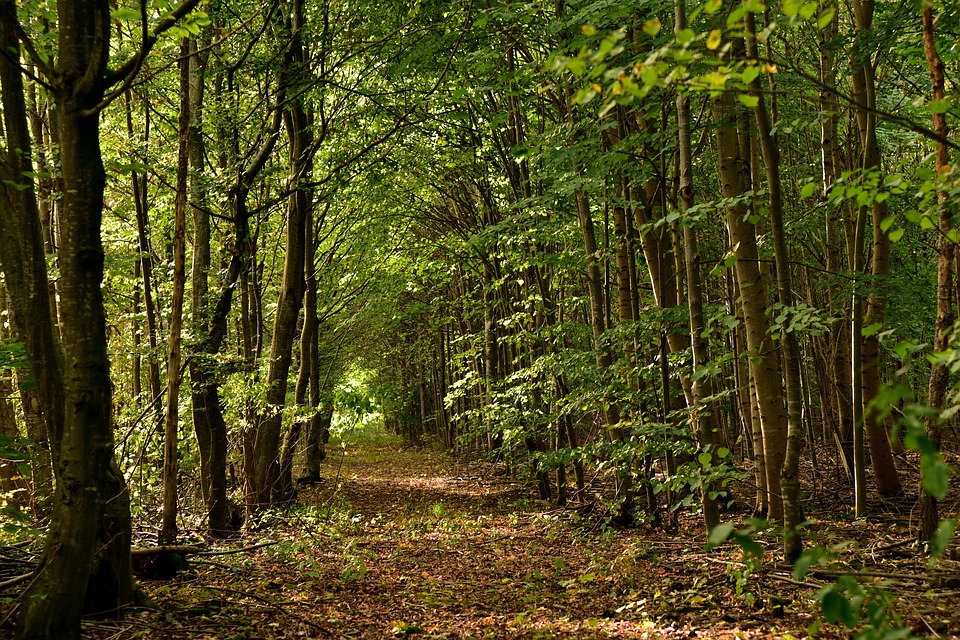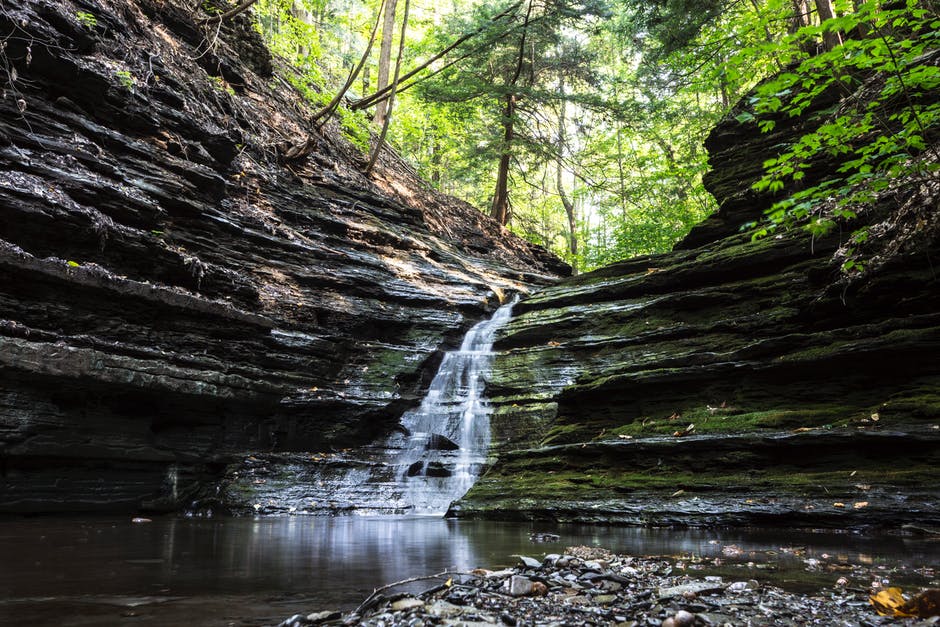Though the practice of forest bathing, or shinrin-yoku, has been going strong in Japan since the 80s and 90s, it is now gaining headway in the United States, too.
What is “forest bathing”?
Forest bathing is less of a hike and more of an intentional but relaxed nature walk through a forested area. Like other mindfulness activities, forest bathing is based on being in the moment, tuning into the five senses and grounding yourself in the present moment. The practice started in Japan in the 1980s and has also become popular in Korea.
The Japanese Society of Forest Medicine and the Korea Forest Service (KFS) have both worked to study the benefits of forest bathing and make it accessible to citizens of their counties. In 2015, the KFS planned to establish 34 national and public healing forests as well as two new national forest healing centers. In Japan, forest bathing is a officially recognized as a stress management activity.

Scientifically speaking, can it improve my health and well-being?
Multiple studies have been done, and the short answer is: Yes, it can!
Most research about the benefits of shinrin-yoku has been conducted in Japan and South Korea. Demonstrated benefits include:
- Boosted immune system
- Lowered blood pressure
- Decreased stress
- Increased energy
- Better sleep
Dr. Qing Li, President of the Japanese Society of Forest Medicine, has conducted research that shows the “phytoncides”, or natural oils that play a part in trees’ defense systems, can boost our anti-cancer proteins, increase the quality and quantity of sleep, decrease feelings of anger and fatigue, lower anxiety and decrease stress hormones. To get these benefits, participants simply need to walk near trees and breathe in phytoncides.

Forest bathing in the US
With growing research to support the benefits of forest bathing, the practice has started to pop up in the US. Programs train forest bathing guides who can then offer walks with short guided meditation sessions, quotes about nature and quiet time for participants to fully immerse themselves in the experience. Four notable forest bathing programs are:
1. Association of Nature and Forest Therapy Guides and Programs, working with Sugarloaf Ridge State Park and Sonoma Ecology Center – Association founder Amos Clifford first worked with troubled youth on guided hikes but wanted to broaden the reach of his work. As a forest therapy guide, he invites walkers to quietly observe their surroundings and relax. One of his most consistent walkers is a woman in her 50s or 60s. Because forest bathing doesn’t involve rigorous climbing or long distances, it’s a practice that is accessible to people of many ages and fitness levels.
John Roney, the manager of Sonoma Ecology Center, plans to meet with three of the biggest healthcare providers in their local area (Kaiser Permanente, Sutter Health and St. Joseph Health), in hopes of launching a forest therapy program that doctors can prescribe to their patients. Patients would then be able to visit the park for free to attend nature walks.
2. Stewards of the Coast and Redwoods and Armstrong Redwoods State Natural Reserve – Much like at Sugarloaf Ridge State Park, Armstrong Redwoods State Natural Reserve offers a forest therapy program. Program coordinator Sequoia Etcheverry has watched participants connect through group walks and encourages them to share their experiences when the walk concludes.
3. Center for Nature and Health at UCSF Benioff Children’s Hospital in Oakland – Dr. Nooshin Razani, director of the center, is prescribing time in nature to her patients and facilitating time in parks and natural areas. She has also conducted a small three month clinical trial to collect data about the effects of intentional time in nature. Razani is passionate about tackling the issues of equity that come with prescribing time in green spaces; studies show that low-income neighborhoods nationwide have less green space than those with higher incomes. In Oakland in particular, about 20% of the population lives below the poverty line. Razani is sensitive to this and has developed accessible transportation for her patients. She hopes to continue to address equity while promoting further studies of the health benefits of nature.
4. Park Rx America and Unity Health Care – Pediatrician Robert Zarr is also the founder of Park Rx America. He writes prescriptions for his patients to spend more time outdoors, particularly if they are experiencing diabetes, obesity or mental health disorders. He has also advocated for a database of all Washington D.C. parks, listed by zip code, to allow residents easy access to the green spaces nearest to them.
On the east coast, Professor of Exercise Psychology Sam Zizzi, who works at West Virginia University, is trying to brainstorm feasible ways to increase safe green spaces in his area. He has partnered up with professor Christiaan Abildso, who is well versed in health policy, to think about ways to fund and sustain such developments. Their ideas include adding bike lanes, connecting parks to sidewalks, more walking paths and even converting unused railroad tracks to rail trails. Additionally, they see potential for relaxing, intentional time in nature on their rivers. Abildso believes that cleaning up the rivers and providing paddle opportunities could increase the amount of time citizens spend outdoors.
How to practice forest bathing on your own
The great news is that shinrin-yoku can be done on your own in a park or wooded area, so you don’t have to venture to the nearest state park and you don’t need a guide to practice.
As you walk, engage your senses.
- What do you see? Examine the details of the plant life around you. Pay attention to any wildlife on the ground, in the trees, or flying above you.
- What do you smell? Can you identify scents that are particular to the season, the weather or your environment?
- What do you hear? Are you able to pick out the sounds of birds, the breeze or other people walking in the area?
- What can you touch? Take your time feeling the bark of the trees, the petals of a flower or blades of grass. Also, how does the air feel on your skin? Are you being warmed by the sun?
If you want to reflect on a poem about nature during your walk, try:
- “Nature” Is What We See – Emily Dickinson
- The Gladness of Nature – William Cullen Bryant
- Your Relationship with Nature – Francis Duggan
- Lines Written in Early Spring – William Wordsworth
One key to forest bathing: leave technology behind. To truly immerse yourself with nature, it’s recommended that walkers leave their phones and cameras elsewhere and focus on engaging their senses instead.

Resources and Related Reading:
Forest Policy and Forest Healing in the Republic of Korea – International Society of Nature and Forest Medicine
Why Forest Bathing is Good for Your Health – Mindful.org
Forest Therapy Can Promote Healing and Bring New Park Visitors – National Recreation and Park Association
A Dose of the Outdoors: Nature’s Impact on Health – REI Blog
Forest Bathing Melds Nature with Mindfulness to Improve Health – NPR
Take a Walk in the Woods. Doctor’s Orders. – The New York Times
Counter Stress by Taking a Forest Bath – West Virginia Public Broadcasting
The Simple Japanese Practice of Forest Bathing Could Be the Key to Leading a Better Life – Business Insider
Brief Introduction to the Science of Forest Therapy: A Curated Collection of Journalism and Research – Nature and Forest Therapy

